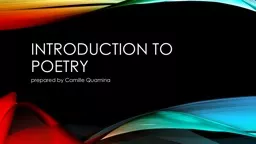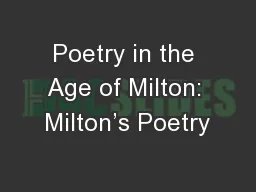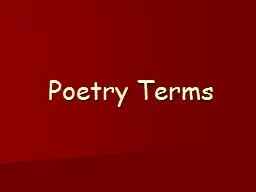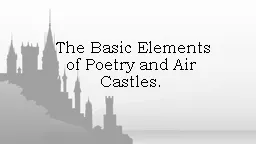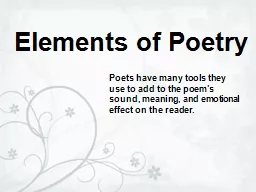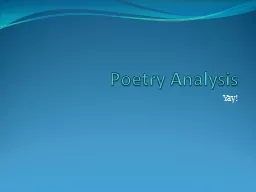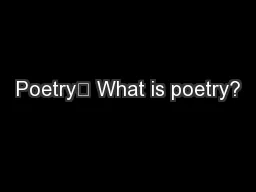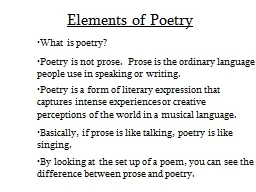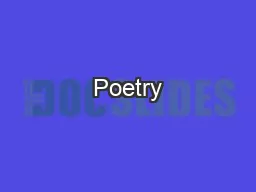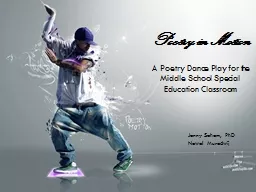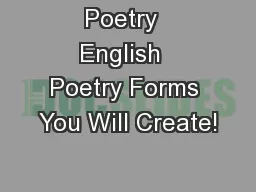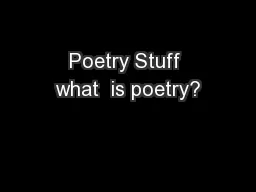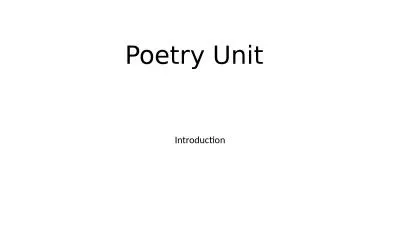PPT-INTRODUCTION TO poetry
Author : liane-varnes | Published Date : 2016-12-02
p repared by Camille Quamina What is poetry The Eagle He clasps the crag with crooked hands Close to the sun in lonely lands Ringed with the azure world he stands
Presentation Embed Code
Download Presentation
Download Presentation The PPT/PDF document "INTRODUCTION TO poetry" is the property of its rightful owner. Permission is granted to download and print the materials on this website for personal, non-commercial use only, and to display it on your personal computer provided you do not modify the materials and that you retain all copyright notices contained in the materials. By downloading content from our website, you accept the terms of this agreement.
INTRODUCTION TO poetry: Transcript
Download Rules Of Document
"INTRODUCTION TO poetry"The content belongs to its owner. You may download and print it for personal use, without modification, and keep all copyright notices. By downloading, you agree to these terms.
Related Documents

